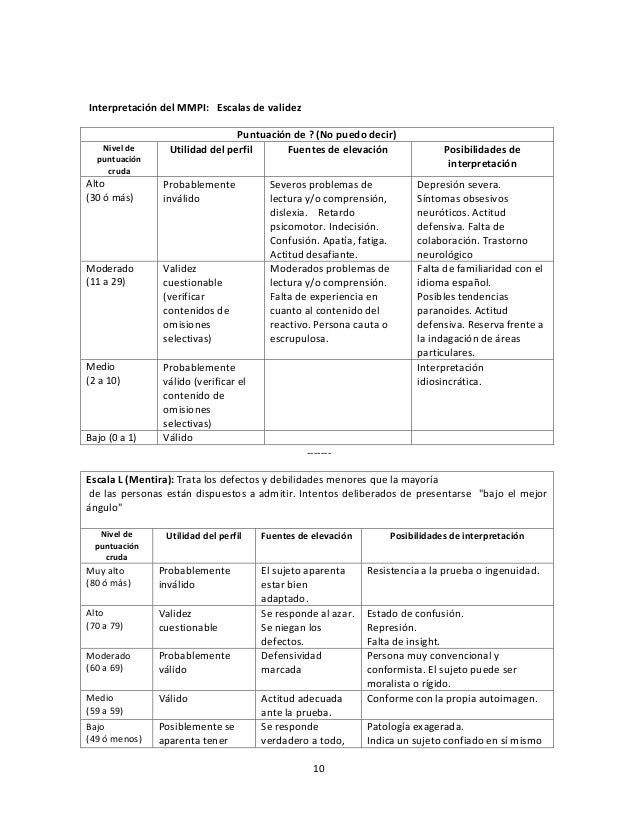

symptoms of obsessive-compulsive disorder (OCD).It ascertains if an individual has: extreme suspicion of other people, grandiose thinking, rigid black-and-white thinking, and feelings of being persecuted by society. This scale, which has 40 questions, evaluates symptoms associated with psychosis. This scale stems from a time in which some mental health professionals viewed same-sex attraction as a disorder. The original purpose of this 56-question test section was to elicit information about people’s sexuality. Individuals’ answers to these items will reveal if they are experiencing psychopathology. This MMPI-2 test scale comprises 50 items that measure antisocial behaviors and attitudes. Scale 3 consists of 600 items and, it evaluates one’s response to stress, including physical symptoms and emotional response to being under pressure. This scale has 57 items, and it measures satisfaction with your own life.įor instance, a high Scale 2 score is an indication that such an individual is dealing with clinical depression or having frequent suicidal thoughts.

This scale contains 32 items and is designed to measure whether you have an unhealthy concern for your own health.Ī high score on this scale is an indication that you are worried about your health which in turn interferes with your life and causes problems in your relationships. Generally speaking, very high scores may indicate a mental health disorder. The clinical scale is designed to state where an individual is on the ten different mental health scales.Įach scale relates to a different psychological pattern or condition, but there’s a lot of overlap between the scales. This article describes only these core scales used in the MMPI-2. There are additional content and validity scales that have been developed independently from the core MMPI, but are often scored by a psychologist who is administering the test. It measures self-control, and family and interpersonal relationships, and people who score highly on this scale are often seen as being defensive. K – The K scale is designed to identify psychopathology in people who otherwise would have profiles within the normal range. The scale contains 60 items.īack F (F b) – The Back F scale measures the same issues as the F scale, except only during the last half of the test. If a person answers too many of the F and Fb scale items incorrectly, it will invalidate the entire test.Ĭontrary to some descriptions of the scale, F scale items are scattered throughout the entire test up until around item 360. It taps a number of strange thoughts, peculiar experiences, feelings of isolation and alienation, and a number of unlikely or contradictory beliefs, expectations and self-descriptions. The scale contains 15 items.į – The F scale (the “F” does not stand for anything, although it is mistakenly sometimes referred to as the Infrequency or Frequency scale) is intended to detect unusual or atypical ways of answering the test items, like if a person were to randomly fill out the test. In other words, people who make these items are often trying to make themselves look like a better person than they really are (or that anybody is). The scale measures attitudes and practices that are culturally laudable, but rarely found in most people. The MMPI-2 remains the more popular of the two, being the third most popular psychometric exam behind the IQ test and Achievement tests. The exam consists of 338 questions taken from the MMPI-2 and is taken in situations where the MMPI-2 cannot be administered.ĭue to there being fewer questions, it usually takes a shorter time of about 35-50 minutes to complete. The test has nine validity scales to aid in the prevention of fake answers.įirst published in 2008, the MMPI-2-RF is based on the 2003 Restructured Clinical Scales. The MMPI-2 consists of 567 questions which candidates generally complete in approximately 90 minutes. There are three variants as expressed above, but the MMPI-2 and the MMPI-2-RF are the two more popular variants.īoth the MMPI-2 and MMPI-2-RF are untimed exams. Some advocates argue that it violates the provisions of the Americans with Disabilities Act (ADA).

It’s important to note that using the MMPI as part of a job qualification process has caused some controversy. The exam must be taken in an assessment center with a psychologist present trained to administer the exam.

There are two other versions of the test One for adolescents, the MMPI-A and a restructured version, the MMPI-2-RF. The exam initially published in 1943, was later updated in 1989 to the now popular MMPI-2 exam. It was developed at the University of Minnesota in the 1930s by Starke R. The Minnesota Multiphasic Personality Inventory is a pre-employment screening test used worldwide.
#Free mmpi test pdf download how to#
How to Pass the Minnesota Multiphasic Personality Inventory Test?.


 0 kommentar(er)
0 kommentar(er)
